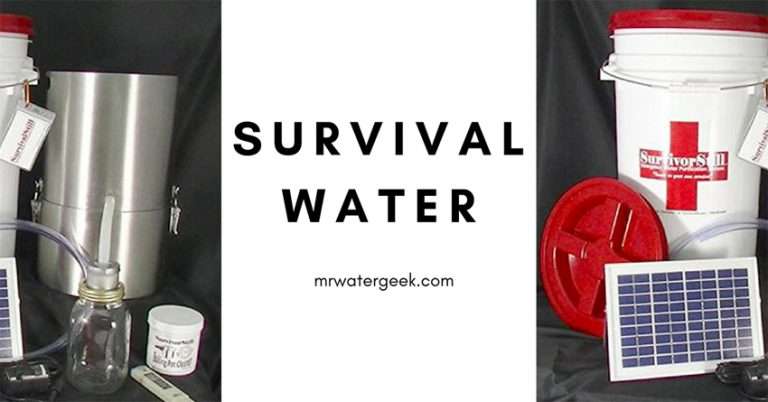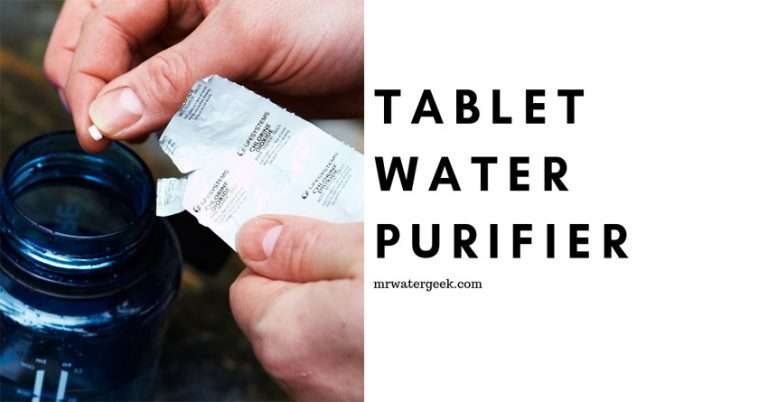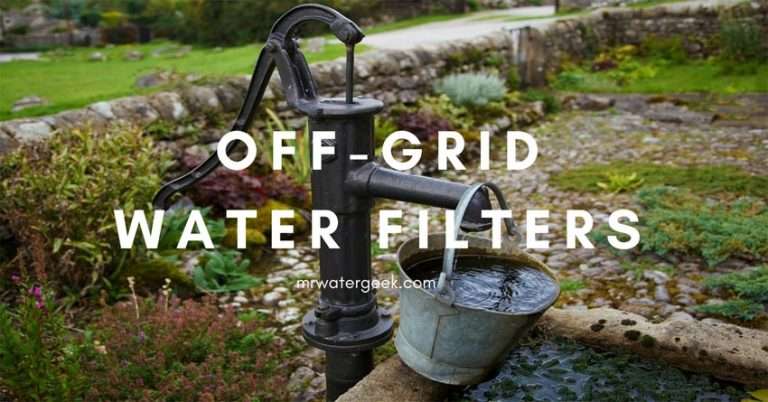11 Plants That Filter Water And Why They Are ALL BAD For You
The Biggest Problems With Using Plants to Purify Water And Soil
Although it is possible to effectively use plants to purify water, there are somethings you should consider:
![]() You can only use plants to filter water in shallow water or at the very least, at the depth at which roots can penetrate.
You can only use plants to filter water in shallow water or at the very least, at the depth at which roots can penetrate.
![]() Using plants to filter water is not very time efficient because it’s very time consuming.
Using plants to filter water is not very time efficient because it’s very time consuming.
![]() Plants that filter water are both biological and natural which means that there are biological limits.
Plants that filter water are both biological and natural which means that there are biological limits.
![]() You can NEVER really know when it has finished filtering. Meanwhile, a regular water filter will indicate when the water is safe to drink.
You can NEVER really know when it has finished filtering. Meanwhile, a regular water filter will indicate when the water is safe to drink.
Benefits of Using Plants To Purify Water And Soil
This is great knowledge to have if you are ever in an emergency and need to filter water without any devices or traditional filter equipment.
Plants that filter water are very low cost ways to purify and clean polluted water.
It is one method of water purification that is completely 100% natural.
You can use plants to filter very large areas or big amounts of water.
You also have other cost saving benefits e.g. you don’t need to replace filters or pay high electricity bills.
How Do Plants Filter Water?
Plants that filter water are able to do this by using dissolved nutrients.  This includes substances like phosphorus or nitrogen, which chemically bond with soil particles.
This includes substances like phosphorus or nitrogen, which chemically bond with soil particles.
All of this basically means that a specific plant is naturally capable of purifying any water that it comes into contact with.
There are many civilizations throughout history that use plants to filter water.
This can be anything from yellow irises planted next to a local lake, water lilies or drinking stalks from the stem of plants. All of these methods are effective ways of using natural plants to purify water.
Water Purification Using Plants
To understand the different plants that filter water, you first need to understand the importance and role of wetlands. Particularly how their roles have changed over time. 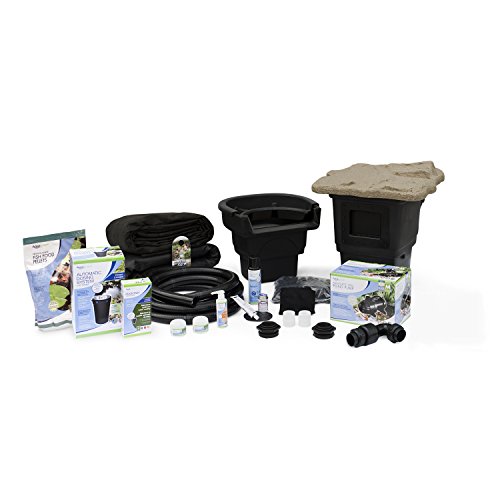
The main purpose of the wetlands is to serve as transition zones between land and water based environments. Both of these move along a gradient and the wetlands provide a dynamic link between them both.
However, the wetlands also have a great capacity to absorb inorganic pollutants. They do this while also adding back nutrients to the water.
It is for this reason that wastewater treatments like to use artificial wetlands as a means of natural filters. The real benefit of using a wetland is that they require almost no maintenance.
Artificial wetlands also don’t use any electricity and cost less than 25% of a regular waste water treatment system.
These types of man made wetland filter systems use all different types of species of plants that you can find in natural wetlands like waterlilies and cattails.
The most important thing to note about wetlands is that they are able to purify water with plants that filter water.
11 Plants That Filter Water
1. Plant Xylem Water Filter
There are lots of different types of xylem plants that you can use as a portable plant water filter. A good batch of xylem plants can turn the most basic sapwood branch into a powerhouse of water filtration.
This plant is so effective at purifying water that an MIT research study shows how xylem plants were able to sieve dirt, bacteria and even dye out from water.
It’s even possible that using the right type of xylem plant can filter out some highly toxic viruses too.
2. Cilantro As Water Filter
Scientists have recently found that crushed cilantro is a highly effective way of purifying water.
All you need to do is to crush up the cilantro and then pass water through it or better yet make them into tea bags.
The result is that it will both absorb and retain things like heavy metals from your water. This makes this natural plant filter as effective as charcoal water filters and a potential life-saver.
3. Two-Step DIY Water Filter With Rice and Coconuts
Yes, as weird as it sounds you can use the shredded fibers from coconut husks as a basic water filter. 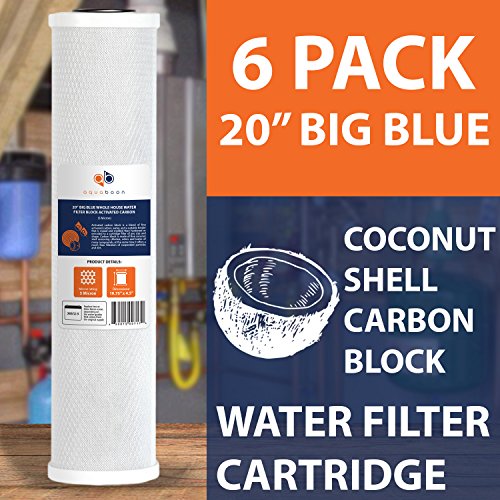
This DIY water filter will remove most physical debris and dirt including metal from your water. To achieve this, simply pass the water through the coconut husks.
The second stage of this filtration method is with the rice husks. This stage of the two-filter process will remove any debris that remains.
Make sure you repeat this process until the water is safe to drink. You should do this by looking out for the color, odor, smell and taste of the water.
4. Banana Peels For Water Purification
If you’re like most people, then you probably think that the only use for banana peels is to cause a comedic slip on a TV show. 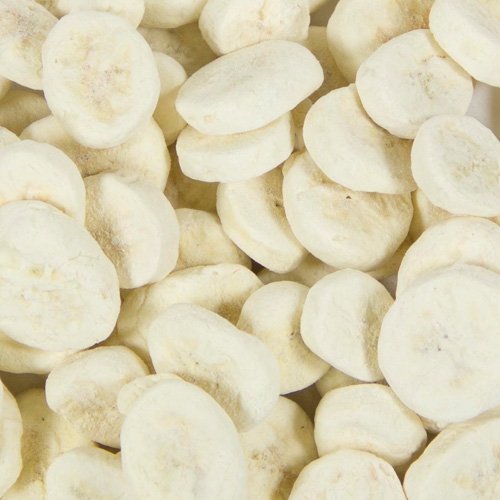
However, researchers are now finding that banana peels can be used effectively for removing pollutants and bacteria from your water.
This is because there are substances in banana peels, which stick to any potentially toxic materials and remove them from your water. Thereby making it safe and clean to drink.
So instead of throwing your banana peels in the trash, keep them. You never know when they might can in handy for purifying your water.
All you need to do is mince and mash them up to use as filter, see the video below.
5. Fruit Peels To Purify Water
It’s not just banana’s, there are other types of fruits that you can use to purify and filter water. 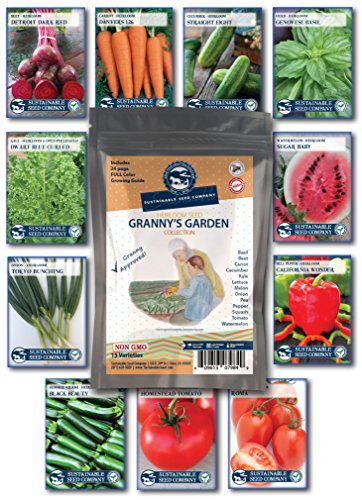
This is a new method of filtering water highlighted by a research study conducted at the National University of Singapore.
Researcher Ramakrishna Mallampati uses a method that involves combining a mixture of apple peelings, tomato and rubbing them in alcohol.
All of this then needs to be dried out to make a natural water filter that you can leave in contaminated water for a few hours.
This make shift fruit peel filter is able to remove things like heavy metals, toxic materials like pesticides and even commercial dye from your water.
According to the research, removing all the peels from the water makes it safe to drink.
6. Aquatic Plants That Filter Water
This comes from the great idea of using plants that grow nearby to filter the nearest body of water. ![]() For instance water lilies and yellow irises are well known for being aquatic water filtering plants.
For instance water lilies and yellow irises are well known for being aquatic water filtering plants.
They also grow in temperate climates as a result of being able to remove things like carbon dioxide from the water. The result? It filters water in a way that makes it taste better and is better for your health.
The other good thing about aquatic plants that filter water is that they are also very good at moderating the nutrient levels in the water.
This includes nutrients like phosphorus and nitrogen, which are very good for you in small amounts.
7. Citrus And Solar Water Purification System
Using the sun as a water filtration method is one of the oldest methods of water purification. But you can make this even more effective by adding a citrus fruit to gently infuse the water.
After filtering your water with the sun (a DIY water filter method I have previously written about) add a few slices of lime or lemon. The benefit of this are twofold:
- Your water is naturally filtered without chemicals in a healthy and natural way (by the sun).
- The water becomes alkaline water with citrus fruit.
Read: Here is Why You Should Drink Warm Lemon Water Everyday
8. Wetland Water Filtration
This method uses plants that are capable of growing in wetland areas.
Reeds, bulrushes are what you will use to filter as these marsh plants can even filter these things like your dishwater.
The best thing about using these plants is that they are easy to find and very common.
9. Plants That Filter Water: Jackfruit Seeds
Yes, that’s right you can use Jackfruit seeds to filter water. 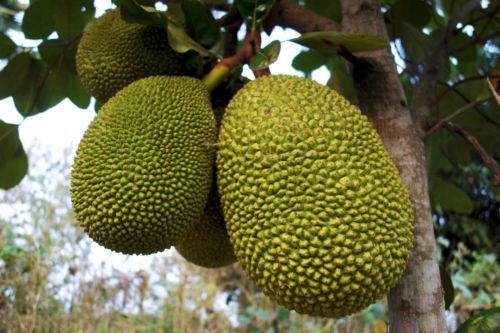
But you really should not use them to filter water that is heavily toxic or contaminated. Jackfruit seeds are better for adding minerals to your water and making them healthier.
Yes, it naturally cleanses your water but Jackfruit seeds add all sorts of vitamins, nutrients and minerals to your water. It is particularly full of nutrients that are beneficial to our immune system and health.
10. Aquatic Plants That Purify Water: Java Plum Seed Purification
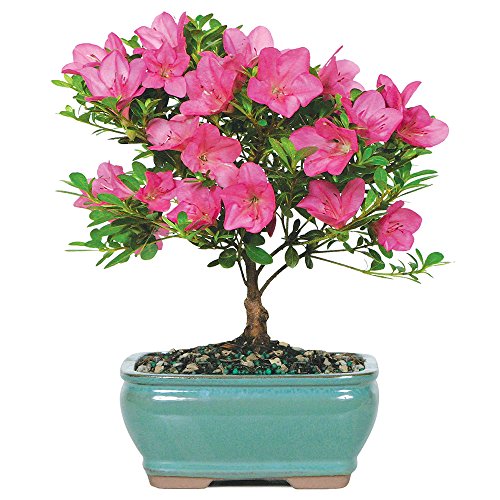 The Java plum seed water filtration method is traditionally from Sudan.
The Java plum seed water filtration method is traditionally from Sudan.
Where the Sudanese people use this seed to cleanse their drinking water. They do this by grinding and blending mature Java plum seeds together.
This mixture is then combined with distilled water as a way to disinfect it and make it safe for drinking. Java plum seeds are good for making sure that things like parasites such as stomach worms are removed from your water.
11. Moringa Oleifera Water Purification
Moringa Oleifera is a great plant for the home and it’s very popular because of its striking aesthetics. But their seeds are almost worth their weight in gold because they have water purification powers.
All you need to do is crush the seeds and add it to water that you want to filter.
This works because the crushed seeds clump together with debris and other types of foreign particles and sink all the way to the bottom. The water at the top of this mixture is left purified, clean and ready to drink.
Why You Should NOT Use Any Of These Plant Filter Methods
Using plants to filter water is ONLY effective if the water is not too toxic because it’s hard to know when it’s completely safe to drink.
 You can use the filtration methods highlighted in this post on things like tap water, which is relatively safe to drink with maybe very minor impurities.
You can use the filtration methods highlighted in this post on things like tap water, which is relatively safe to drink with maybe very minor impurities.
If you’re trying to purify water that is already reasonably safe then using these water plant filters can be very effective.
These plants are also very good from a gardener’s perspective. You may want to use them to maintain good soil health etc.
Also, why not try to have some of these plants in the home? They have the potential to clear and purify air.
There are lots of benefits of using plants to filter water too. Cost effective, completely natural and you don’t have to keep replacing filter cartridges. Finally, certain fruits and plants (like Jackfruit seeds) add back lots of healthy nutrients to your filtered water.
A More Effective Way To Filter Water
However, as amazing as these plants, herbs and fruits are – you can NOT rely on them in every situation and with all water types.
Especially with water that is heavily contaminated or water that you are unsure about.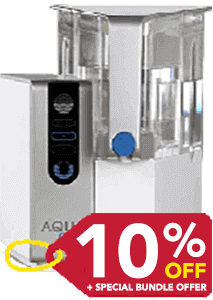
Unlike a traditional water filter, there is no way of knowing when the plant has finished filtering the water.
Even the most generic water filter product will let you know when the water is safe to drink but it’s very difficult to know with plants.
Bacteria, toxins, chemical substances, oil and other pollutants can sometimes be very difficult to see with the naked eye.
 So if you’re really worried about the cleanliness of your water go for the safe option. Use a proper water filter product and don’t take any chances with your health.
So if you’re really worried about the cleanliness of your water go for the safe option. Use a proper water filter product and don’t take any chances with your health.
Scientific References
Sobsey MD, Stauber CE, Casanova LM, Bron JM, Elliott MA (2008) Point of use household drinking water filtration: A practical, effective solution for providing sustained access to safe drinking water in the developing world. Environmental Science and Technology 42: 4261–4267.
Boutilier MSH, Lee J, Chambers V, Venkatesh V, Karnik R. Water Filtration Using Plant Xylem. Zhou Z, ed. PLoS ONE. 2014;9(2):e89934. doi:10.1371/journal.pone.0089934.
Peter-Varbanets M, Zurbrügg C, Swartz C, Wouter Pronk W (2009) Decentralized systems for potable water and the potential of membrane technology. Water Research 43: 245–265.
D I Stom et al 2017 IOP Conf. Ser.: Earth Environ. Sci. 52 012029
Shannon M, Bohn P, Elimelech M, Georgiadis J, Marinas B, et al. (2008) Science and technology for water purification in the coming decades. Nature 452: 301–310
Van Ieperen W, van Meeteren U, van Gelder H (2000) Fluid ionic composition influences hydraulic conductance of xylem conduits. Journal of Experimental Botany 51: 769–776
Sens ML, Emmendoerfer ML, Muller LC (2013) Water filtration through wood with helical cross-flow. Desalination and Water Treatment.
Sobsey MD, Stauber CE, Casanova LM, Brown JM, Elliott MA (2008) Point of use household drinking water filtration: A practical, effective solution for providing sustained access to safe drinking water in the developing world. Environmental Science and Technology 42: 4261–4267

